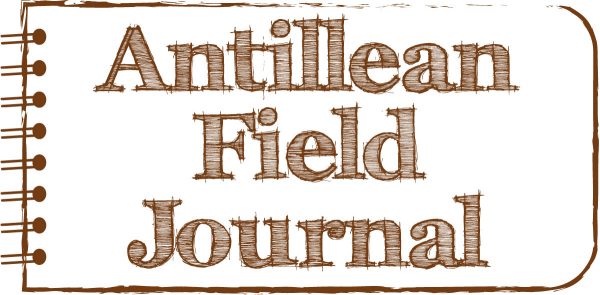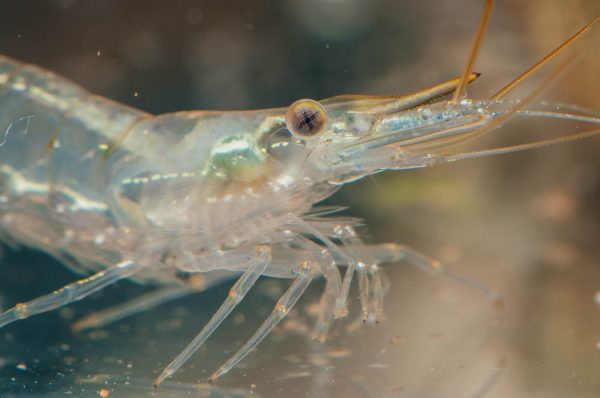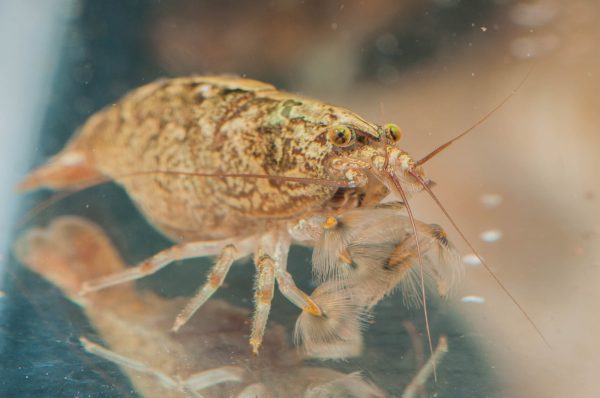
Get an inside look at science as it happens in the Caribbean. This week we dive into the freshwater ecosystems of St. Kitts and Nevis to see who keeps the water clean.

Ah, the ghaut! Is there any better place to be on St. Kitts or Nevis? The bottoms of these steep ravines are cool in the shade of tall trees. If you’re lucky, crystal clear water rushes or trickles through. Tiny waterfalls fill tranquil pools. The sound of running water joins the songs of birds and the hum of insects.
You might wonder how the streams and pools in the ghaut stay so clear. They certainly look nothing like the water in a roadside ditch. Also, those trees above are constantly dropping leaves into the water like they do on the forest floor. It’s a miracle that the pools in a ghaut aren’t entirely full of leaves.
The natural flow of water pushes dirt and leaves downstream, especially during big storms and strong rains. During other times, the task of breaking down leaves and other materials is done by a diverse crew of critters. Some are aquatic insects, like fly larvae and beetles. Freshwater snails get in on the action, too. Fish and tadpoles also help out, if they’re around.
Perhaps the most important ghaut cleaners of all are freshwater shrimp. Two kinds in particular use a remarkable tag team approach. The Yellow-nose Shrimp is small, fast and almost clear. It’s also a shredder: it takes large leaves and shreds them down to particles of different sizes. It eats some of what it shreds, and the smaller bits flow downstream more easily than big leaves.

The shredding process also fills the water with nutrients. This could be a recipe for streams full of rotting muck. Luckily, fan shrimp are there to take over. There are a few kinds living on St. Kitts and Nevis, and they are perfectly adapted to grabbing and eating the particles the Yellow-nose Shrimp creates. Their four front feet end in specialized brushes. They fan out these brushes to collect food particles from the water.
Our dynamic duo solves a very important problem: they take dead leaves and turn them into delicious shrimp. Streams run clean and birds like the Green Heron have a great source of food. Catchment points on mountain streams also feed into the water supply for people on St. Kitts and Nevis. When you turn on the faucet, chances are some of that water was filtered by shrimp!
